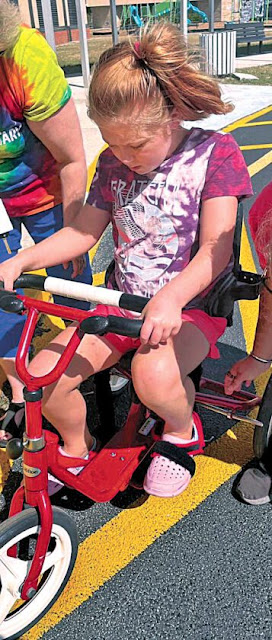In spite of what I’m told by my neighbors in the senior apartment complex where I live—and, at times, my body—I am in, ahem, midlife.
I don’t believe I’m in denial. (Does anybody ever believe they are?) I do, however, fear that one day I may not be able to continue cycling —at least, not in the way I always have. I’ve been reminded, by a few peoples, of octogenarian (I’m not there yet!) Joe Biden falling off his bike. Did those people secretly vote for the Fake Tan Fūhrer?
If the day ever comes when I can’t balance my trusty Mercians, I hope I still can keep on pedaling in some fashion. Matthew Stepeniak of Hudson, Wisconsin gives me hope. He got a side-by-side tandem so his 92-year-old mother Nancy, for whom he is the caregiver, could ride with him.
 |
| Nancy Stepaniak on the side-by-side tandem she rides with her son Matthew, who provided this photo to Wisconsin Public Radio. |
He recalls that the first time they rode together, they didn’t get very far because they were stopped so many times by curious people. He then knew that he was onto something special, which led him to co-found Limitless Cycling, a nonprofit that provides adaptive bicycles and equipment for people of all abilities to enjoy the outdoors. It’s now a Wisconsin chapter of Cycling Without Age.
“I am just a boy who wanted to give his mother a bicycle,” he recalls. “And things just got out of control in the most beautiful way.”
Cycling Without Age began in 2012, when Ole Kassow of Denmark acquired a three-wheeled pedal-powered “trishaw” and began giving rides to local senior citizens. From a one-man operation, CWA became an international organization; the first US chapter opened four years later in Wisconsin—in Oshkosh, to be exact.
The organization is still young. And folks like Kassow and Stepaniak are keeping people cycling—and in midlife.






.jpg)
.jpg)













